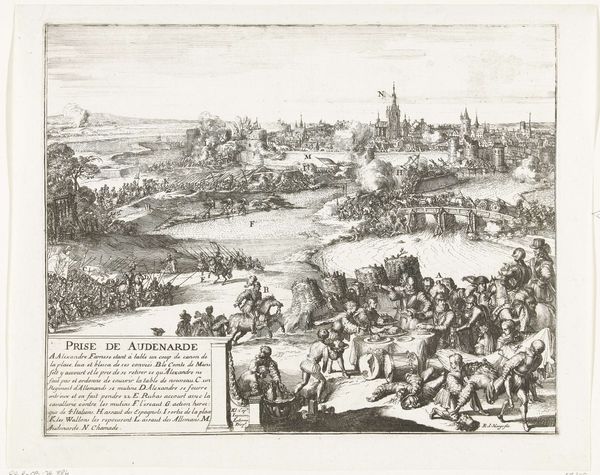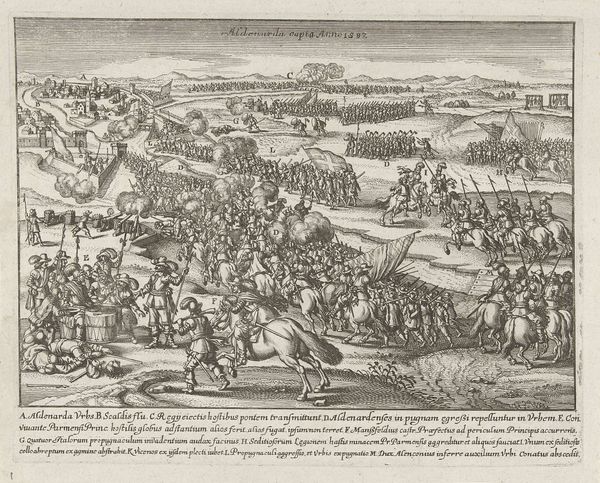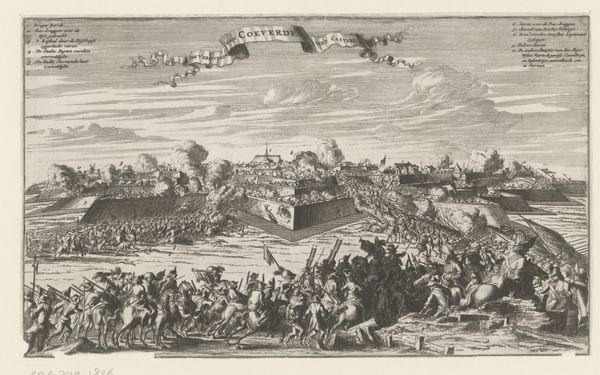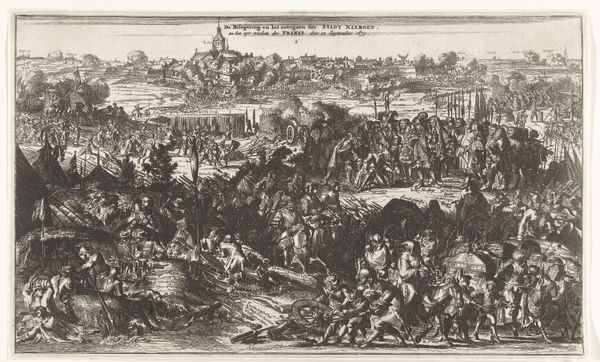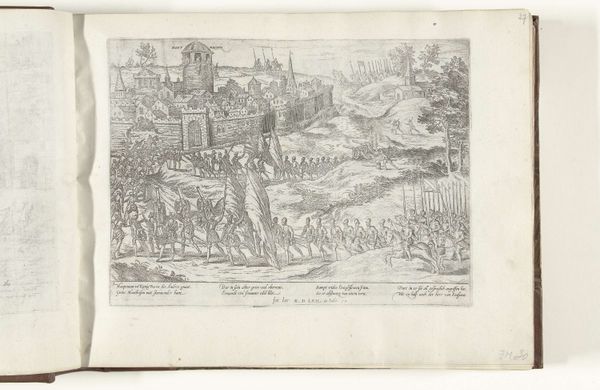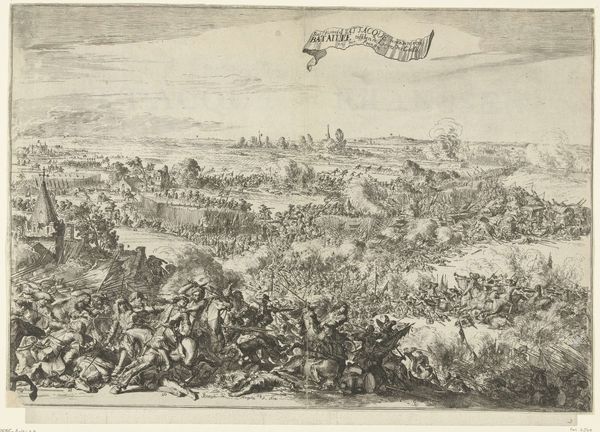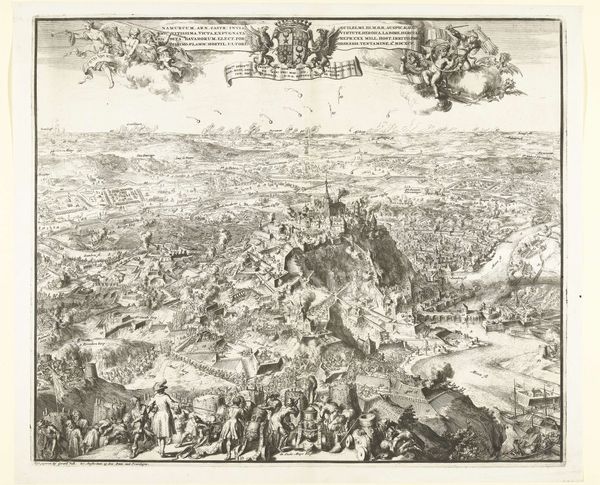
Schermutseling tussen de Turken en de keizerlijke troepen 1574 - 1578
0:00
0:00
print, engraving
# print
#
landscape
#
figuration
#
line
#
history-painting
#
northern-renaissance
#
engraving
Dimensions: height 246 mm, width 338 mm
Copyright: Rijks Museum: Open Domain
Curator: Here we have "Skirmish between the Turks and the Imperial Troops" an engraving made between 1574 and 1578 by Frans Hogenberg. It's a busy composition, wouldn't you agree? Editor: Absolutely! My initial reaction is one of chaotic energy. The lines are so fine and detailed, yet they depict a scene of violent struggle across land and sea. There’s a stark contrast between the static buildings on the left and the frantic activity dominating the scene. Curator: Hogenberg really exploits the linear quality of engraving to create texture and movement. Look at how he uses hatching to define form, particularly the musculature of the horses and figures locked in combat. It gives the print a sense of depth despite the somewhat flattened perspective. Editor: I'm struck by how the image, while seemingly about a specific military conflict, taps into broader anxieties surrounding religious and political tensions of the period. The clash between the Ottoman Empire and the Holy Roman Empire was a major concern in Europe. Curator: Indeed. Beyond the direct depiction of warfare, we see elements characteristic of Northern Renaissance landscape. The sweeping vista with ships on the horizon provides a sense of scale but also serves as a backdrop to the unfolding drama. There is that wonderful layering. Editor: Yes, and these aren't neutral observations either; the work embodies distinct Eurocentric perspectives. While we look at the artist’s treatment of line and form, it's equally vital to remember this representation of "Turks" falls within historical modes of cultural representation, often tinged with xenophobia or orientalism. What stories does it deliberately obscure? Whose voices are missing from the narrative? Curator: An excellent point. Though it provides insights into artistic techniques of the time, as well as the documentation of military events, its representation is undoubtedly shaped by a very particular point of view. Editor: Precisely, a reminder that every artistic depiction is shaped by ideologies as well as aesthetics. Looking at it, you can analyze a lot more than just lines and texture but the dynamics of historical power that continues to have present day reverberations. Curator: Reflecting upon this, Hogenberg's use of line to portray the skirmish really highlights both the artistry and the sociopolitical narrative being crafted. It really pushes one to ask what’s at stake. Editor: Exactly, and how might we ethically approach artwork, and others like it, conscious of their cultural baggage while valuing their artistic merits.
Comments
No comments
Be the first to comment and join the conversation on the ultimate creative platform.
